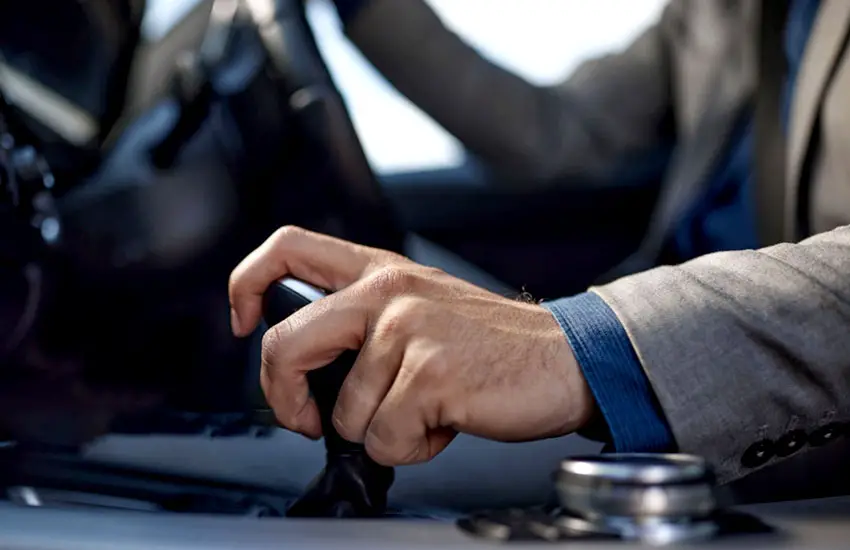As an Amazon Associate, I earn from qualifying purchases at no extra cost to you.
How to Master Manual Transmission: Proven Techniques
You might be curious about driving a car with a manual transmission. It’s a fun skill to learn and can make you a better driver. In this blog post, we'll explore How to Master Manual Transmission. Whether you're just starting or want to improve your skills, we've got tips to help you shift gears smoothly. By the end, you'll feel more confident behind the wheel. So, let's get started on this exciting journey to mastering manual driving!
How to Master Manual Transmission

1. Understand the Basics
Before you start driving a car with a manual transmission, it’s important to know how it works. In a manual car, there are three pedals: the clutch, the brake, and the accelerator. The clutch is the left pedal. You press it when you want to change gears. The brake is the middle pedal, used to slow down or stop the car. The accelerator is the right pedal. You push this pedal to make the car go faster.
Next, there is the gear stick, which lets you choose the gear you want to use. The gear stick usually has a pattern showing the different gears, like 1, 2, 3, 4, 5, and R (reverse). When you press the clutch pedal, you can move the gear stick to change gears. In first gear, the car starts moving.
As you speed up, you will need to shift to higher gears, like second and third gear, to keep the car moving smoothly. It's also important to remember that every time you shift gears, you must press the clutch. Understanding how these parts work together is the first step to mastering a manual car.
2. Get Comfortable with the Controls
Once you understand the basics, the next step is to get comfortable with the controls of the car. Sit in the driver's seat and take a moment to feel the pedals. Press the clutch pedal with your left foot and hold it down. This is important because the clutch needs to be pressed every time you change gears.
While holding the clutch down, practice moving the gear stick into first gear, second gear, and so on. Get familiar with how it feels to shift from one gear to another. This might feel a little strange at first, but that's okay! As you practice, it will start to feel more natural.
You can also try to get used to the sound of the engine. When you shift gears, you may hear the engine sound change. Listening to these sounds can help you know when to change gears. Also, practice pressing the accelerator gently while you are in first gear. This helps you learn how much pressure you need to apply to make the car move forward smoothly.
The more you practice using the pedals and the gear stick, the more comfortable you will feel. Getting to know the controls is a crucial step in learning how to drive a manual car well.
3. Starting the Car
To start driving a manual car, you need to know how to get it moving from a stop. First, make sure you are in the driver’s seat with your seatbelt on. Press the clutch pedal all the way down with your left foot. This is important because you cannot start the car without pressing the clutch.
Next, move the gear stick to the first gear position. This is usually at the top left of the gear pattern. Now, it's time to start the engine. Turn the key in the ignition or press the start button, depending on your car. Once the engine is running, you need to start moving.
Slowly lift your left foot off the clutch pedal until you find the "bite point." The bite point is the moment when the engine and the wheels start to connect, and you feel the car wanting to move. When you reach the bite point, press the accelerator gently with your right foot. This helps give the car a little power to start moving.
As you press the accelerator, keep lifting your left foot off the clutch slowly. This may take some practice, but soon you will feel comfortable getting the car moving. Remember to stay calm and don't rush. With practice, starting from a stop will become easy for you!
4. Shifting Gears
Once you are driving and have moved into first gear, you will need to shift to higher gears as you speed up. To shift gears smoothly, you should press the clutch pedal all the way down again with your left foot. This disconnects the engine from the wheels, allowing you to change gears without damaging the car.
After pressing the clutch, move the gear stick from first to second gear. You will feel the gear stick click into place. Once you have shifted into second gear, you can slowly release the clutch pedal while gently pressing down on the accelerator with your right foot. This will help the car continue to move smoothly without stalling.
You will need to repeat this process when shifting to third gear and so on as you gain speed. It is important to pay attention to the sound of the engine. When the engine sounds like it is working harder, it is time to shift to a higher gear. If you shift too soon or too late, the car may feel like it is struggling.
So, listen carefully! If you are slowing down, you will need to downshift to a lower gear, like from third to second. Press the clutch, shift to the lower gear, and then release the clutch slowly while pressing the accelerator. With practice, shifting gears will feel smooth and natural, and you will enjoy driving even more!
5. Stopping the Car
Stopping a manual car is just as important as starting and shifting gears. When you want to stop, the first step is to press the clutch pedal down with your left foot. This is important because it prevents the engine from stalling.
Next, use your right foot to press the brake pedal and slow the car down. As you slow down, you may want to shift the gear stick to neutral. This is done by moving the gear stick to the middle position. It is not always necessary to shift to neutral if you are coming to a complete stop, but it can be helpful.
When you are almost stopped, gently press the brake until the car comes to a complete stop. Once the car is stopped, you can keep your foot on the brake or pull the handbrake up to keep the car from rolling back. If you are parked, you should also shift the gear stick to neutral.
Finally, if you are done driving, turn off the engine by turning the key in the ignition or pressing the stop button. Remember, it is very important to practice stopping smoothly so that you and your passengers feel safe and comfortable.
6. Practice, Practice, Practice
The most important part of mastering a manual transmission is practice. Find a quiet place like an empty parking lot or a low-traffic street where you can drive without many distractions. This will help you focus on learning how to operate the manual transmission without worrying about other cars.
Start by practicing starting and stopping the car. Try to get a feel for the clutch and how it engages. As you feel more comfortable, practice shifting gears. Remember to listen to the engine sounds; they will help you know when to shift. If you stall the car, don't worry! It happens to everyone when they are learning.
Just restart the engine and try again. With practice, you will get better at finding the bite point and shifting gears smoothly. You can also practice driving on different roads. Try going uphill, downhill, and around corners to see how the car behaves in different situations.
Each time you drive, you will become more confident and skilled. After some time, you will be able to drive a manual car without even thinking about it. Make sure to stay calm and patient with yourself as you learn. The more you practice, the more you will enjoy driving a manual transmission!
7. Learn to Hill Start
One challenging but important skill to learn in a manual car is how to start on a hill. This is often called a hill start. To do a hill start, first find a gentle slope to practice on. When you come to a stop on a hill, you can use the handbrake to prevent the car from rolling back.
Pull the handbrake up and keep it on. Press the clutch pedal down with your left foot and shift into first gear. Next, slowly lift your left foot off the clutch until you feel the bite point, which is when the car wants to move forward. When you reach the bite point, you need to press the accelerator with your right foot to give the car some power.
Once you feel ready, slowly release the handbrake while continuing to press the accelerator. The car should move forward without rolling back. This might take a few tries to get right, so don't worry if it feels difficult at first. Keep practicing until you feel confident.
Knowing how to hill start is an important skill because it helps you drive safely in different situations. With practice, you will be able to start on a hill smoothly and confidently, making you a better manual driver!
8. Be Patient
Learning to drive a manual car takes time and practice, so it is important to be patient with yourself. At first, you might feel a little overwhelmed or frustrated, and that is completely normal. Every driver has to start from the beginning, and it is okay to make mistakes.
If you stall the car or have trouble shifting gears, don't be too hard on yourself. Just take a deep breath and try again. With each attempt, you will learn something new, and things will start to feel easier. Remember, driving a manual car is about muscle memory.
The more you practice, the more your body will remember what to do. You will start to feel more comfortable pressing the clutch, shifting gears, and using the accelerator. Celebrate your small successes! Each time you drive without stalling or when you make smooth gear shifts, you are getting better.
If you feel nervous, you can also ask a friend or family member who knows how to drive a manual to help you practice. They can give you tips and support as you learn. Most importantly, enjoy the process! Learning to drive a manual car can be a fun experience, and being patient with yourself will help you become a skilled driver in no time.
9. Know When to Use Each Gear
Understanding when to use each gear is crucial to mastering a manual transmission. Each gear has a specific purpose based on your speed and the situation. For example, you use first gear when starting from a complete stop or when you are moving very slowly.
This gear gives you the power you need to get going. As you pick up speed, you will shift to second gear. This gear is great for driving slowly in traffic or making turns. When you reach a moderate speed, usually around 20 to 30 miles per hour, it’s time to shift to third gear.
This gear helps you maintain speed without using too much fuel. Once you are going faster, like 40 miles per hour or more, you should shift into fourth or fifth gear. These higher gears are used for cruising on the highway, allowing you to save gas and go faster without straining the engine.
When you slow down, you will need to downshift to lower gears, like from fourth to third, to help the engine keep running smoothly. Learning to know when to shift is about paying attention to your speed and the sound of the engine. Practice will help you understand how each gear feels and when to use them.
10. Enjoy the Drive!
Once you have practiced and become more comfortable with driving a manual car, the final step is to enjoy the experience! Driving a manual car can be a lot of fun because you have more control over how the car behaves. You can feel the engine and how it responds to your actions.
This connection makes driving exciting and enjoyable. As you drive, take time to notice your surroundings and the feeling of the car as you shift gears. Try to relax and enjoy the ride, whether you are driving in the city or on the highway.
You might even want to take a road trip with friends or family to test your skills and explore new places. Remember, it is okay to make mistakes while learning. Each mistake is a chance to learn something new and improve your skills.
The more you drive, the more confident you will become, and you will find yourself enjoying every moment behind the wheel. Manual driving gives you a sense of freedom and adventure, so embrace it! Soon, you will be mastering your manual transmission skills and enjoying every drive.
I hope this guide helps you learn to drive a manual car with confidence. Remember, practice is key, and it's okay to make mistakes along the way. Take your time to understand the controls, shift gears smoothly, and enjoy the driving experience. Soon, you will feel comfortable behind the wheel and have fun driving. Keep practicing, and you will master manual transmission in no time! Happy driving!
Are These Questions in Your Mind?
Is it hard to learn to drive a manual car?
Learning to drive a manual car can be challenging at first, but with practice, it becomes easier. Many people find it helpful to practice in a quiet area before driving in traffic.
Can I learn to drive a manual car on my own?
While it’s possible to learn on your own, it's often helpful to have someone experienced guide you. They can give you tips and help you avoid common mistakes.
Do I need to use both feet when driving a manual car?
Yes, you will use both feet. Your left foot operates the clutch, while your right foot controls the brake and accelerator.
Is it better to learn manual before automatic?
Learning manual first can help you understand driving better. It gives you more control over the car, but many people start with automatic cars for ease.
Can I stall a manual car anywhere?
Yes, you can stall a manual car in many places, but it’s more common when starting or stopping. Try to practice stalling in safe, low-traffic areas.
Do I need to press the clutch when braking?
You do not need to press the clutch when braking unless you are about to stop completely or shift gears. It helps prevent the engine from stalling.
Is it normal to feel nervous driving a manual car?
Yes, feeling nervous is completely normal, especially when you are just starting. With more practice, you will become more confident.
Can I drive a manual car in the rain?
Yes, you can drive a manual car in the rain, but be extra careful. Wet roads can be slippery, so make sure to drive slowly and smoothly.
Do I need to change the transmission fluid regularly?
Yes, it is a good idea to change the transmission fluid regularly to keep the car running smoothly. Check your owner's manual for the recommended schedule.
Is it safe to drive a manual car in heavy traffic?
Driving a manual car in heavy traffic can be challenging, but it is safe as long as you stay focused and practice. Start in low-traffic areas to build your skills.











